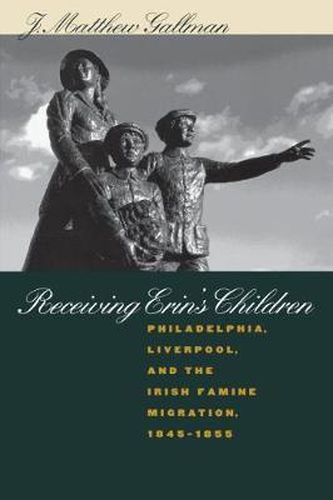Readings Newsletter
Become a Readings Member to make your shopping experience even easier.
Sign in or sign up for free!
You’re not far away from qualifying for FREE standard shipping within Australia
You’ve qualified for FREE standard shipping within Australia
The cart is loading…






Between 1845 and 1855, 2 million Irish men and women fled their famine-ravaged homeland, many to settle in large British and American cities that were already wrestling with a complex array of urban problems. In this innovative work of comparative urban history, Matthew Gallman looks at how two cities, Philadelphia and Liverpool, met the challenges raised by the influx of immigrants.
Gallman examines how citizens and policymakers in Philadelphia and Liverpool dealt with such issues as poverty, disease, poor sanitation, crime, sectarian conflict, and juvenile delinquency. By considering how two cities of comparable population and dimensions responded to similar challenges, he sheds new light on familiar questions about distinctive national characteristics–without resorting to claims of American exceptionalism. In this critical era of urban development, English and American cities often evolved in analogous ways, Gallman notes. But certain crucial differences–in location, material conditions, governmental structures, and voluntaristic traditions, for example–inspired varying approaches to urban problem solving on either side of the Atlantic.
$9.00 standard shipping within Australia
FREE standard shipping within Australia for orders over $100.00
Express & International shipping calculated at checkout
Between 1845 and 1855, 2 million Irish men and women fled their famine-ravaged homeland, many to settle in large British and American cities that were already wrestling with a complex array of urban problems. In this innovative work of comparative urban history, Matthew Gallman looks at how two cities, Philadelphia and Liverpool, met the challenges raised by the influx of immigrants.
Gallman examines how citizens and policymakers in Philadelphia and Liverpool dealt with such issues as poverty, disease, poor sanitation, crime, sectarian conflict, and juvenile delinquency. By considering how two cities of comparable population and dimensions responded to similar challenges, he sheds new light on familiar questions about distinctive national characteristics–without resorting to claims of American exceptionalism. In this critical era of urban development, English and American cities often evolved in analogous ways, Gallman notes. But certain crucial differences–in location, material conditions, governmental structures, and voluntaristic traditions, for example–inspired varying approaches to urban problem solving on either side of the Atlantic.